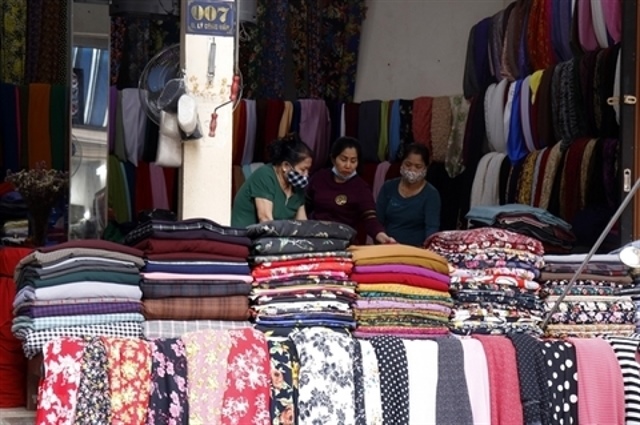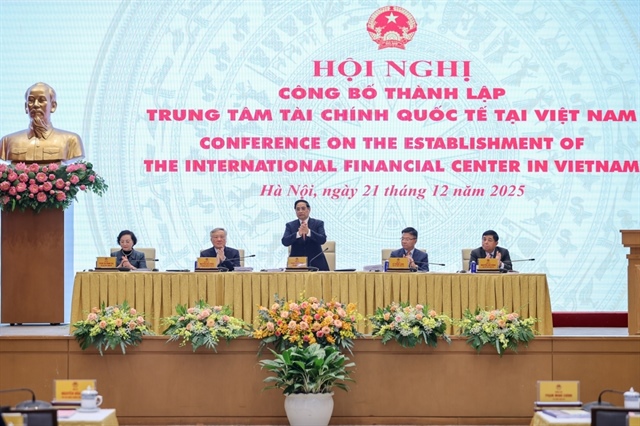Western Bank, PVFC in merger deal
Western Bank, PVFC in merger deal
Western Commercial Joint Stock Bank has recently publicized its merger plan with PetroVietnam Finance Joint Stock Corp (PVFC), a subsidiary of the national petroleum conglomerate PetroVietnam.

The plan was brought up for discussion in the shareholders’ meeting of Western Bank in the Mekong Delta city of Can Tho last Saturday.
Though Western Bank has publicized its merger plan and a proposal seeking VND37 trillion ($1.75 billion) in financial assistance from the central bank to finalize the deal, PVFC continued to deny that it will take place.
Marry me, marry me not
Last Wednesday PVFC, coded PVF on the Ho Chi Minh Stock Exchange (HoSE), sent an official dispatch to exchange stating that the company is in the process of researching a restructuring scheme under the Government’s directives, so it has no formal basis to disclose information on the issue.
This is the second time PVFC has denied information related to the merger with Western Bank.
Meanwhile, Western Bank has repeatedly implied that it would merge into PVFC, and that the plan has been given the green light by the Prime Minister.
Western Bank said on December 28, 2012, that the Prime Minister has agreed to approve the merger, a result of the banking system restructuring process that has been implemented.
Similar stories have occurred many times recently.
The parties involved in a Sacombank takeover in May 2012, and those in the merger of Habubank with SHB in August both denied rumors of the deals. However, both mergers ended up taking place.
New bank, new problems
If the merger between Western Bank and PVFC is realized, the local financial market will have a new, very big bank with chartered capital of VND9 trillion ($430 million) and total assets of VND100 trillion ($4.77 billion).
But more issues have also arisen from the deal.
According to the merger plan, PetroVietnam, which owns a 78 percent stake in PVFC, will have to continue to support the firm in solving the latter’s problems in the restructuring process and ensuring financial support.
PetroVietnam will also have to deposit VND7 trillion in PVFC for at least 6 months.
The State Bank of Vietnam (SBV), on the other hand, will have a long to-do list if the merger is finalized.
It will have to provide refinancing loans worth VND30 trillion to support the liquidity of the merged bank and to create capital for the bank to fund lending.
Lending rates for such refinancing loans with terms of about 3-5 years should be 6 percent lower than deposit rates.
SBV will also have to allow the new bank to maintain a compulsory reserve with 50 percent in cash and 50 percent in valuable papers, including government bonds, treasury bills and bills issued by the Ministry of Finance.
Besides, SBV will have to consider allowing the merged bank to expand its network, which is expected to grow by 20 to 25 branches annually within three years from the merger date.
Moreover, SBV will also have to exclude loans borrowed by Vinashin and Vinalines from the calculation of bad debt ratio, profit criteria, credit institution classification and branch establishment of the new bank.
Both PVFC and Western Bank still have huge bad debts, of which loans borrowed by Vinashin, Vinalines and their affiliates amounted to over VND2.8 trillion as of May 31, 2012 at PVFC.
Meanwhile, Western Bank’s bad debts were reported at over VND1.1 trillion, mostly in money it lent to Ficombank, Saigon Bank, Vietnam Tin Nghia and Trust Bank as of February 29, 2012.
The new bank has also sought approval from Ministry of Finance to exempt its corporate income for three years starting from the merger date and cut it by half in the following two years.
tuoitrenews




























